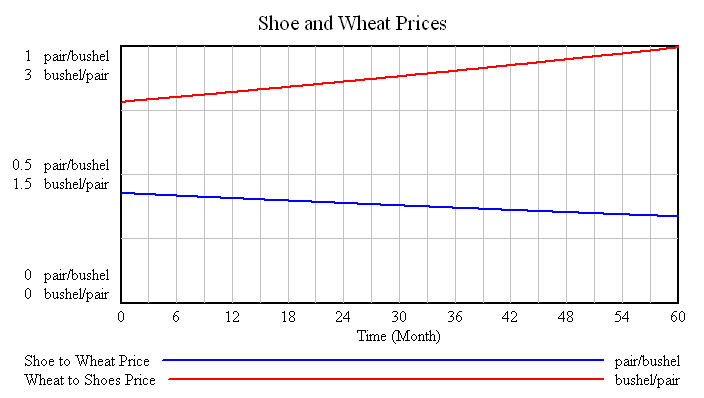The Free Market Center
The Free Market Center
Deflation - Shoe Production Decreases
(Decreasing Money Supply)
| Shoe Production Decreases | -2.00%/Month |
| Wheat Production Fixed | 0.00%/Month |
| Money Supply Decreases | -0.50%/Month |
In this scenario the supply of money and the production of shoes decline each month.

A decline in shoe production should push dollar prices of shoes up. Yet, the influence of deflation (decreasing money supply) causes them to decline.
Wheat dollar prices should not change. The decline in money supply, however, pushes the dollar price of wheat down.

The bushel to pair price rises because of the drop in shoe production.
The change in money has no influence on direct exchange prices.
© 2010—2020 The Free Market Center & James B. Berger. All rights reserved.
To contact Jim Berger, e-mail:
In this case deflation amplifies the expected decline in the dollar price of shoes. It also causes the dollar price of wheat to decline in the face of unchanged production.
Does this send consistent signals to the market?